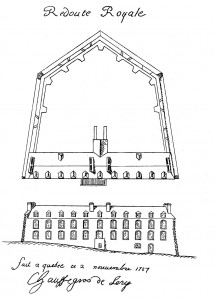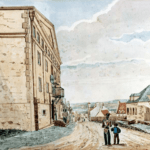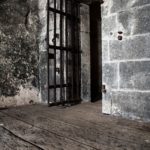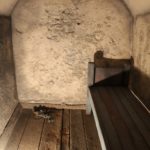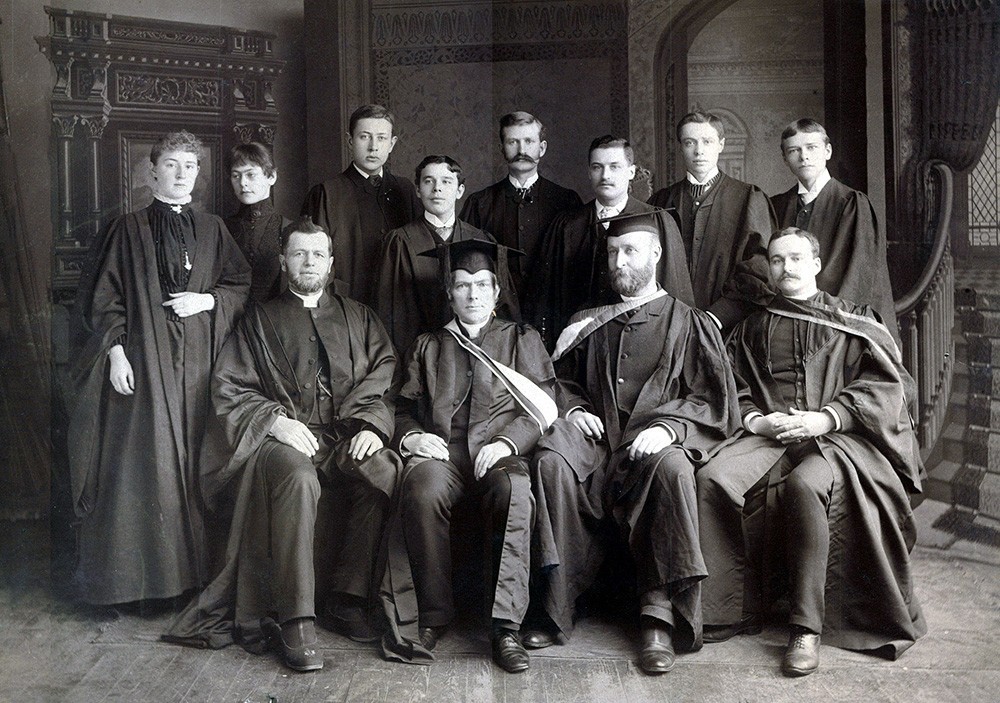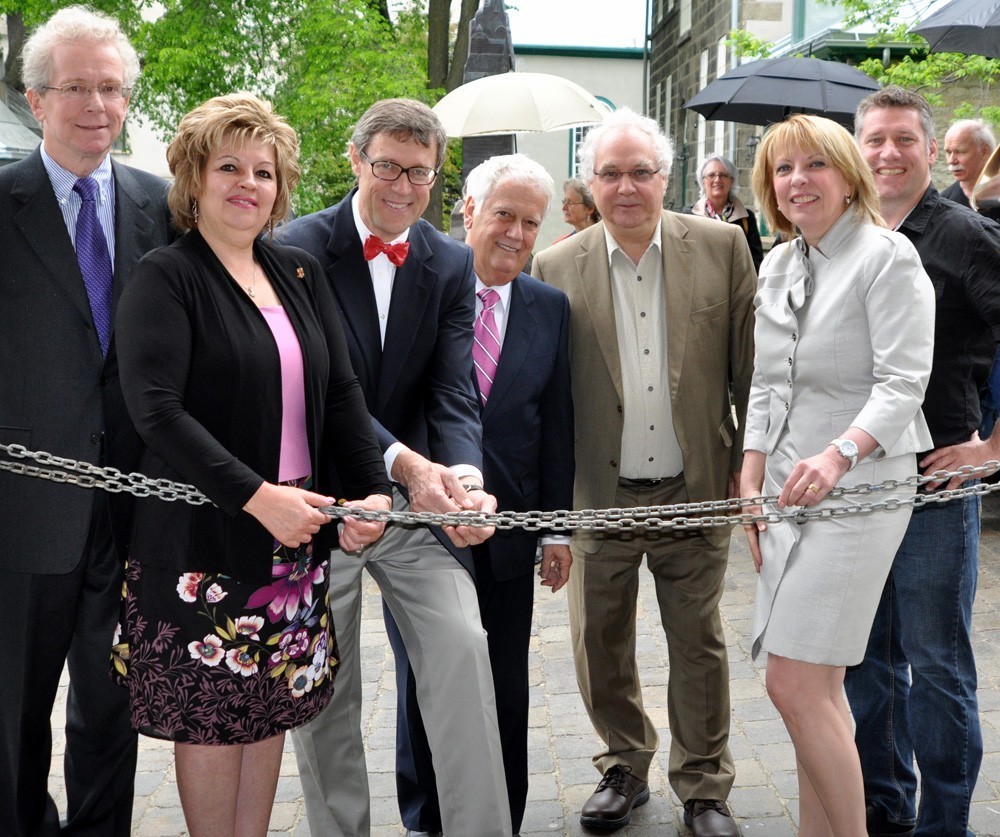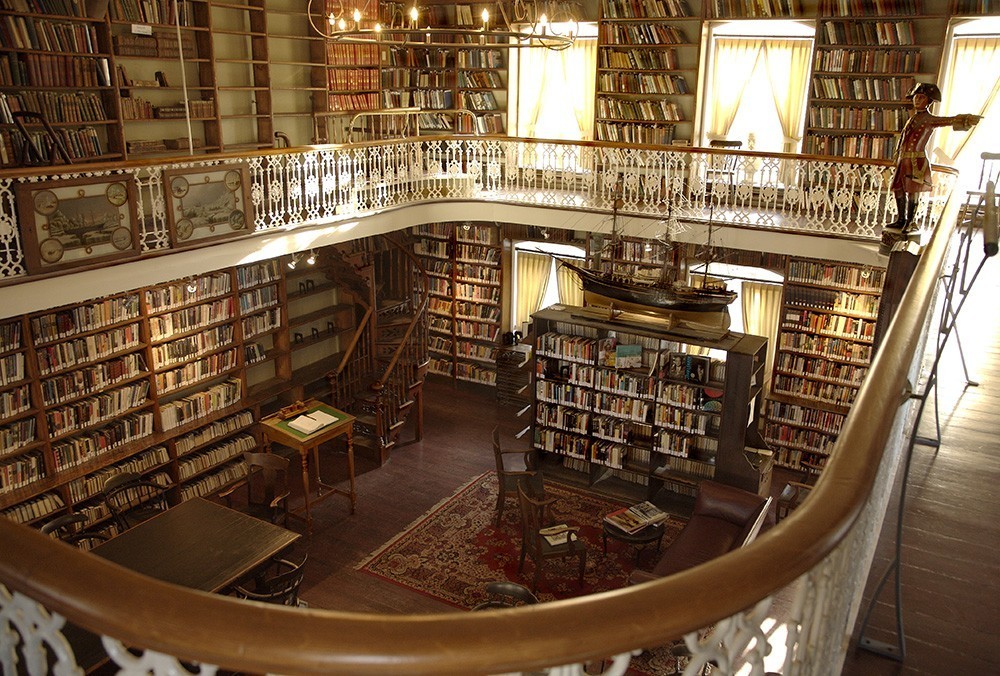The Morrin Centre reflects four major periods of Quebec City history and bears witness to the French- and English-language communities that contributed to its heritage and made it what it is today.
Royal Redoubt (1712-1808)
In the days of New France, the Redoute Royale, or Royal Redoubt, stood on the site of the Morrin Centre. These enclosed defensive works were adjacent to the original city walls.
Mainly used as a military barracks, the Royal Redoubt also on occasion housed prisoners of war. During the 1740s, many British prisoners were captured and brought to Quebec, including men and women captured in raids on New England towns by the French and their Native allies. Many died in the cramped and disease-ridden conditions of captivity. Some were traded for French prisoners held in Boston, but others stayed on, including Esther Wheelwright, who later became mother superior of the Ursuline Nuns.
After the British captured Quebec in 1759, the Royal Redoubt served as the city’s main prison until 1787, when it became a store-house for the British Army. It was demolished in 1808 to make place for the current building.
Quebec Common Gaol (1812-1867)
The current building was erected between 1808 and 1813, to serve as Quebec City’s public prison, or “common gaol” as it was then known. It housed its first prisoners in 1812. The building was designed by Quebec City architect François Baillairgé. For the outside of the building, Baillairgé followed the neoclassical style known as Palladianism, which was then much in vogue for official buildings. The Quebec common gaol was also one of the first two prisons in Canada to reflect the ideas of British prison reformer John Howard (the other was the Montreal gaol, opened in 1811-1812). Howard sought to reform what he saw as the archaic English prison system, where prisoners of all sorts were crowded together in common rooms. He also thought that imprisonment should replace most corporal and capital punishment, which were major parts of English criminal justice. Howard suggested that prisoners should be confined in individual cells at night, should be put to hard labour in collective areas during the day, and should also be offered education. Prisoners were also meant to be divided up according to the severity of their crime, to avoid hardened criminals influencing those in prison for minor offences.
Some of Howard’s reforms were indeed put into effect in the Quebec common gaol. Many prisoners were put to hard labour, and the use of corporal punishment gradually declined. But at the same time, new ideas of proper public conduct meant that more and more people were swept up off city streets and incarcerated for offences such as vagrancy, public drunkenness and prostitution. The prison quickly became overcrowded, and any idea of classifying and separating prisoners according to their crime was largely abandoned. At best, men were separated from women, with women having their own prison building in the yard of the main gaol. As well, capital punishment continued, with public hangings taking place in front of the prison’s main door, some from an iron balcony specially built for the purpose. While the gaol was open, sixteen men were hanged in front of the gaol, all but one of them before 1840.
Most prisoners were ordinary men and women imprisoned for minor offences. But several famous and infamous prisoners also spent time in the gaol, such as novelist Philippe Aubert de Gaspé (jailed for debt), murderer Docteur l’Indienne, and journalist and Patriote Étienne Parent (imprisoned on suspicion of treason during the Rebellions of 1837-1838), along with dozens of American prisoners of war during the War of 1812.
Within a decade of its being opened, officials and citizens began complaining that the gaol was inadequate. But it wasn’t until 1867 that the gaol was finally closed. The prisoners were transferred to a new prison on the Plains of Abraham, which is now a wing of the Musée national des beaux-arts du Québec.
Morrin College (1862-1902)
Morrin College was Quebec City’s first English-language institute of higher education. The school initially shared rooms with the Masonic Temple. In 1868, the old gaol was renovated to house Morrin College.
The school was founded on the initiative of Scotsman Dr. Joseph Morrin, former mayor and prominent Quebec City doctor.
Through affiliation with McGill University, general Arts degrees were offered. Pastors for the Presbyterian Church were also trained.
The college admitted women into the B.A. program from 1885 onwards, at about the same time as McGill and several decades before Université Laval. Due to the scarcity of students, classes were co-ed, which was even more uncommon for the day. A lack of funds and students obliged the College to close at the turn of the 20th century.
Literary and Historical Society of Quebec (1824-present)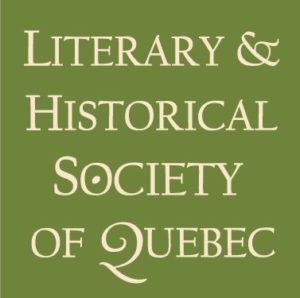
Founded in 1824 by the Earl of Dalhousie, governor of Lower Canada, the Literary and Historical Society of Quebec was Canada’s first learned society. After several moves and two fires, the Society settled into the northern wing of Morrin College in 1868.
Its original aims were diverse. The Society gathered historical documents about Canada and republished many rare manuscripts. Research in all fields of knowledge was actively encouraged. Scholarly essays were published regularly in a series of Transactions, some making a significant contribution to the advancement of knowledge.
Over the years, the Society played a part in creating institutions that would take over many of its traditional roles. For instance, it fostered the foundation of the National Archives of Canada. It was also active in the preservation of Canada’s heritage, helping to save what was left of the historic Plains of Abraham battlefield from development and participating in the creation of the Historic Sites and Monuments Board of Canada. The Society’s activities gradually became centred on the services of its lending library, providing access to English-language books in a largely French-speaking city.
In the last decade, the Society has broadened its mandate. The building was entirely renovated, and transformed into the Morrin Centre, which not only houses the library but also acts as Quebec City’s English-language cultural centre and a historical interpretation site.
English-language library
The origins of the library date to the founding of the Literary and Historical Society of Quebec in 1824. In the course of its long history, the Society has had the fortune to host such illustrious figures as Charles Dickens and Emmelyne Pankhurst. Since 1868, the library has been housed in the building currently housing the Morrin Centre. During this period, the library incorporated the collection of the Quebec Library, the oldest subscription library in Canada, founded in 1779 by Governor Frederick Haldimand. While many of the older books are no longer in the collection, the current collection, to which new acquisitions are continually added, includes a number of older volumes, some of which date to the 16th century.
